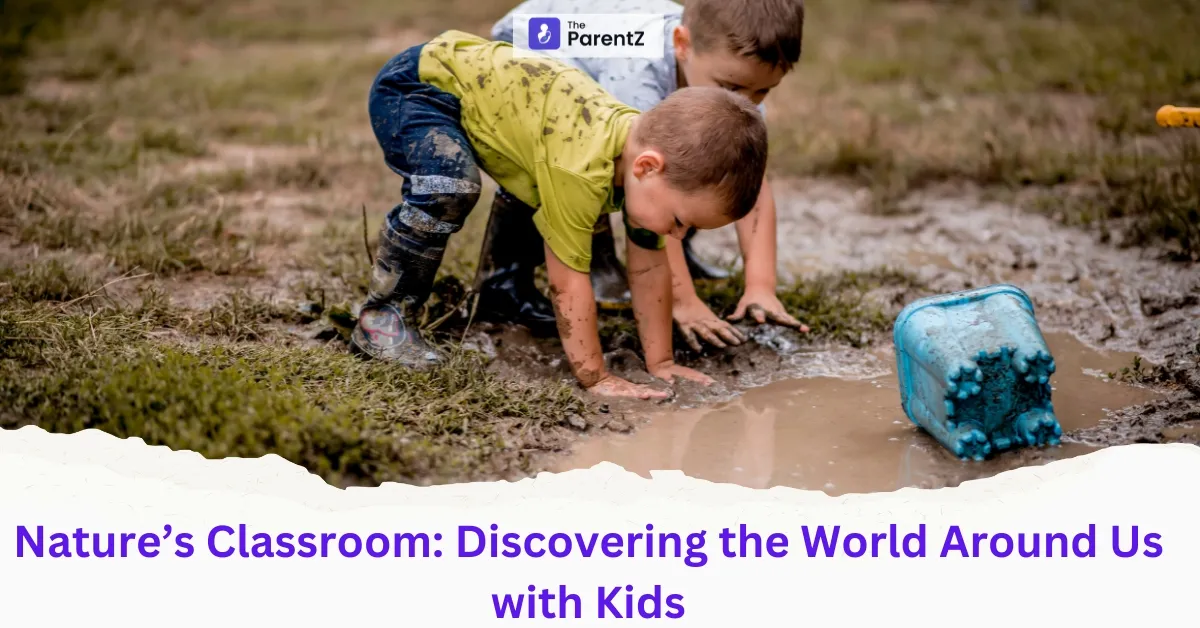In a world increasingly dominated by screens and indoor activities, introducing children to the wonders of nature has never been more important. Nature is the ultimate classroom, offering endless opportunities for learning, creativity, and physical activity. Whether it’s exploring a local park, gardening in the backyard, or hiking through a forest, nature provides a hands-on way for children to develop critical thinking, observation skills, and a deep appreciation for the environment.
Why Nature is the Best Teacher?
Unlike structured classrooms, nature provides an open-ended learning experience where children can explore at their own pace. The sights, sounds, and textures of the outdoors engage all five senses, making learning more memorable. Studies show that children who spend time in nature tend to have stronger problem-solving skills, better concentration, and a greater sense of curiosity. Exposure to nature also reduces stress and anxiety, helping children develop emotional resilience.
The Benefits of Outdoor Learning
- Boosts Cognitive Development: Outdoor exploration encourages curiosity and critical thinking. When kids observe insects, identify different types of leaves, or track animal footprints, they engage in scientific inquiry without even realizing it.
- Enhances Physical Health: Running, climbing, and playing outdoors improve cardiovascular health, coordination, and muscle development. Exposure to sunlight also increases Vitamin D levels, which supports strong bones and immunity.
- Encourages Creativity and Imagination: Nature is an ever-changing playground. Sticks become magic wands, rocks turn into treasures, and trees transform into fortresses. Free play in nature fosters creativity and innovative thinking.
- Develops Social Skills: Outdoor activities often involve teamwork and communication. Whether building a fort, playing a scavenger hunt, or solving a nature puzzle, children learn to collaborate and express their ideas.
- Teaches Environmental Stewardship: When kids interact with nature regularly, they develop a deep respect for the environment. Understanding ecosystems, learning about conservation, and witnessing wildlife firsthand instill a sense of responsibility for protecting the planet.
Fun Ways to Explore Nature with Kids
- Nature Scavenger Hunt: Make a list of items for kids to find—like a feather, a smooth rock, or a bird’s nest. This activity sharpens observation skills while making outdoor exploration exciting.
- Gardening Together: Planting vegetables, herbs, or flowers teaches children about life cycles, responsibility, and patience. Watching plants grow from seeds to full bloom is a rewarding experience.
- Animal and Insect Tracking: Kids love searching for animal tracks, bird feathers, and insect trails. A magnifying glass and a simple field guide can turn an ordinary walk into a thrilling investigation.
- Cloud Watching and Star Gazing: During the day, lie on the grass and identify cloud shapes. At night, use a telescope or binoculars to spot constellations and planets.
- Building Fairy Houses or Bug Hotels: Encourage kids to create small homes for fairies or insects using natural materials like twigs, leaves, and stones. This activity blends creativity with environmental awareness.
- Rock and Leaf Art: Collect smooth stones or fallen leaves and use them for painting or making leaf rubbings. This combines art with nature appreciation.
- Bird Watching: Provide binoculars and a bird identification book. Kids can observe different bird species and learn about their habitats and behaviors.
- Outdoor Storytelling: Sit under a tree or by a campfire and create stories inspired by the surroundings. Storytelling fosters imagination and language skills.
- Hiking and Exploring Trails: Take kids on nature walks or hikes. Let them lead the way, ask questions, and collect small treasures like pinecones or interesting leaves.
Incorporating Learning into Nature Play
- Math in Nature: Count tree rings to determine a tree’s age, measure the height of plants, or compare the sizes of leaves.
- Science Exploration: Learn about weather patterns, study pond ecosystems, or observe how different animals adapt to their environment.
- History & Geography: Visit historical nature sites, explore different terrains, and discuss how landscapes change over time.
Overcoming Challenges
- Limited Outdoor Space? Even a small balcony or community park can provide nature experiences. Indoor gardening and window bird-watching are great alternatives.
- Weather Issues? Dress appropriately for rain or cold. Jumping in puddles and experiencing different seasons makes nature even more exciting.
- Screen Time Competition? Make outdoor time an adventure with themes like "Nature Detectives" or "Jungle Explorers."
The Lasting Impact of Nature’s Classroom
Exploring nature with kids isn’t just about fun—it shapes their growth, well-being, and understanding of the world. The simple act of watching a butterfly, digging in the soil, or listening to birds chirp can create lasting memories and valuable life lessons.








Be the first one to comment on this story.